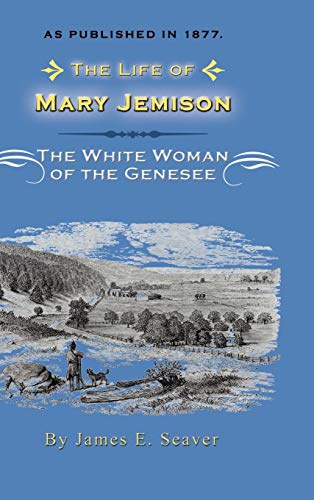The Life of Mary Jemison
Deh-He-Wa-MIS the White Woman of the Genesee
James E Seaver
BOOK REVIEW

In the turbulent waters of American history, few narratives shine as profoundly as that of The Life of Mary Jemison: Deh-He-Wa-MIS the White Woman of the Genesee. This gripping account weaves together the threads of a young settler's forced transformation into an adopted member of the Seneca Nation, challenging our perceptions of identity, culture, and survival amidst monumental change. Author James E. Seaver's portrayal of Mary Jemison is not just a recounting of her life but an evocative exploration of the intersections between colonization, Native American culture, and individual resilience.
Mary Jemison, abducted from her family during a raid in 1758, found herself thrust into a world that was as foreign as it was compelling. Seaver's narrative brings to light the duality of her existence-a white woman assimilating into Native American life, navigating a cultural maelstrom with grace and complexity. By capturing Jemison's voice, Seaver allows readers to delve deep into her psyche, unveiling her struggle and ultimate acceptance of the Seneca way of life. Through her experiences, we are given a rare glimpse into the intricacies of Native life during a time of profound upheaval.
The power of Jemison's story resonates even more profoundly when viewed through the lens of contemporary societal issues. As we grapple with questions of identity and cultural heritage today, Jemison's life challenges us to examine the very essence of what it means to belong. How often do we dismiss the stories of those who do not conform to the narratives crafted by the dominant culture? Jemison's narrative exudes a strength that not only defies the circumstances of her abduction but also compels us to confront our biases and preconceptions about race, gender, and culture.
Readers' reviews of The Life of Mary Jemison highlight the polarization of opinions surrounding Seaver's work. Some laud it as an essential historical document that humanizes the plights of those caught between cultures. They emphasize the emotional weight of Jemison's story, claiming it opens hearts and minds to the complexity of early American life. Others, however, express discomfort with Seaver's narrative choices, critiquing him for a lack of depth in portraying the Seneca culture and the trauma that permeated Jemison's experiences. This discourse exemplifies how history itself is often contested, with narratives influenced by perspective, intention, and interpretation.
What makes this account of Mary Jemison particularly urgent is its historical timing. Penned in the early 19th century, during a period when America was defining its identity post-independence, Seaver's work invites us to question who gets to tell history and whose voices are silenced. Jemison's life story emerges as both a personal and collective saga, revealing the struggles of Native Americans amidst the relentless tide of colonization. This was a time when the 'American identity' was being forged, yet many were being left behind, forgotten, or misrepresented.
In dissecting the emotional landscape of Jemison's life, one cannot ignore the symbiotic relationship between pain and resilience. Her journey from captivity to acceptance is both heartbreaking and inspiring, reminding us that the human spirit can adapt and thrive even in the harshest conditions. It's a narrative that compels you to confront the uncomfortable truths about our past, nudging you gently (or perhaps not so gently) towards a broader understanding of American history and the complexities of human experience.
The legacy of Mary Jemison is not just confined to the pages of Seaver's book; it has influenced countless movements and discussions on indigenous rights and identity. Activists and scholars alike draw from her experiences to advocate for a deeper understanding of cultural exchange and appropriation. In sharing her resilience and adaptability, Jemison's voice continues to resonate, serving as a rallying cry to honor and recognize the multifaceted narratives that weave the fabric of our collective history.
In our current climate, where discussions about race, culture, and identity are more vital than ever, The Life of Mary Jemison becomes imperative reading. Seaver's masterful rendering of Jemison's life urges us to reflect on our identities and the stories we inherit. Will we listen? Will we learn? The echoes of Mary Jemison are calling out to us, whispering (or perhaps yelling) the importance of understanding, empathy, and respect for all narratives that shape who we are as a society.
So, take the plunge into this remarkable biography. Allow yourself to be swept away by the tides of history and human emotion. The life of Mary Jemison is not just a story of survival; it's a beacon illuminating the enduring power of the human spirit in the face of adversity. 🌊✨️ Are you ready to immerse yourself in her story?
📖 The Life of Mary Jemison: Deh-He-Wa-MIS the White Woman of the Genesee
✍ by James E Seaver
🧾 316 pages
2001
#life #mary #jemison #white #woman #genesee #james #seaver #JamesESeaver